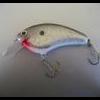
BobP replied to Santana_moretto_fishing's topic in Fishing Tackle

BobP replied to EvanT123's topic in Fishing Rods, Reels, Line, and Knots

BobP replied to BassnChris's topic in Bass Boats, Canoes, Kayaks and more

BobP replied to *Hank's topic in Fishing Rods, Reels, Line, and Knots

BobP replied to Kyle46N's topic in Fishing Rods, Reels, Line, and Knots

BobP replied to new2BC4bass's topic in Fishing Rods, Reels, Line, and Knots
We have placed cookies on your device to help make this website better. You can adjust your cookie settings, otherwise we'll assume you're okay to continue.

